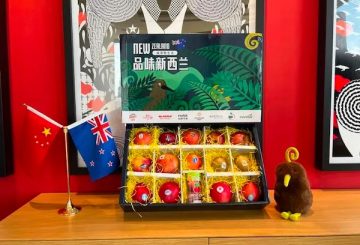2022年、インバーカーギル(サウスランド地方の都市)で、サウスランドとアジア市場との取引関係を拡大するための新しいフォーラムが計画されています。
グレート・サウス(サウスランドの地域開発機関)のアジア市場開発マネージャーのElla Zhang氏は、サウスランドに住む人々がアジア市場とのつながりを構築する「大きな機会」があり、ほとんどの人がそれに気づいていないだけだと述べました。
10月に発表されたテ・ワイポウナム(翡翠がある水辺、碧玉の海の広がる地という意味のマオリ語)とアジア財団の報告書では、アジア市場への参入には個人のコネクションが不可欠であることが示されています。
Zhang氏は、来年、アジアの大使や投資家を招き、サウスランドの企業経営者とともにフォーラムを開き、この地域の可能性を広げるために、この人脈を活用しようと考えています。
「アジアに輸出したり、ビジネスを展開したりするのは、とても大変なことだと思われています。私はその壁を破りたいのです。」と彼女は語ります。
「このフォーラムを出発点にして、この地域がアジアとビジネスをする準備ができていることを示し、私たちがすでに持っている優秀性と専門性を紹介したいのです。」
サウスランドの企業は、アジア市場への参入は「難しすぎる」という認識を持っていたり、アリババのような大規模なeコマース・プラットフォームには規模が足りないと考えていましたが、それは間違っているとZhang氏は述べました。
「私たちは自分たちの仕事をするだけで、それを自慢するのは好きではありません。私たちは多くの機会を逃してきたと思います。私たちのことを知らなければ、私たちにコンタクトを取ることもできませんから。」
アリババのカントリーマネージャーであるPier Smulders氏は、12カ月前に就任して以来、4回にわたって同地を訪れ、輸出と観光の両分野で提供されるサービスに「圧倒された」という。
「彼はそれまでここに来たことはなかったのですが、(今では)アリババのプラットフォームを使った輸出の手伝いができないかと、いろいろな企業と積極的に話をしています。これは、人脈の広さを示していると思います。」
以前、グレート・サウスの戦略的プロジェクト担当ゼネラルマネージャーであるStephen Canny氏は、サウスランドの輸出業者は、高価値の中流階級のアジア市場をターゲットにすることで、500万人から1000万人の消費者を獲得できると述べていました。
現在資金調達中のニュージーランド・ファンクショナル・フーズ社(New Zealand Functional Foods)のオートミール工場は、食肉や水産物の副産物を利用してサーモンオイルサプリメントやペットフードを作る可能性とともに、同市場の現在のトレンドに合致していると、Zhang氏は述べています。
現在、サウスランドの食肉生産者は、副産物を地域外の企業に販売するのが一般的でした。
「私たちとしては、『ちょっと待って、それをほとんどタダで売ったら、彼ら(地域外の企業)はそれを使ってバリューチェーン(価値の連鎖)を強化し、自分たちのレシピを作って、大儲けする』という感じです。なぜ、ここではそれができないのだろう?」と。
サウスランドに建設予定のグリーン水素工場は、国際的な関心も集めており、Zhang氏は韓国の貿易委員会からアプローチを受けています。
「伝統的な商品という観点だけではないのです」と彼女は語りました。
情報元:STUFF






























































